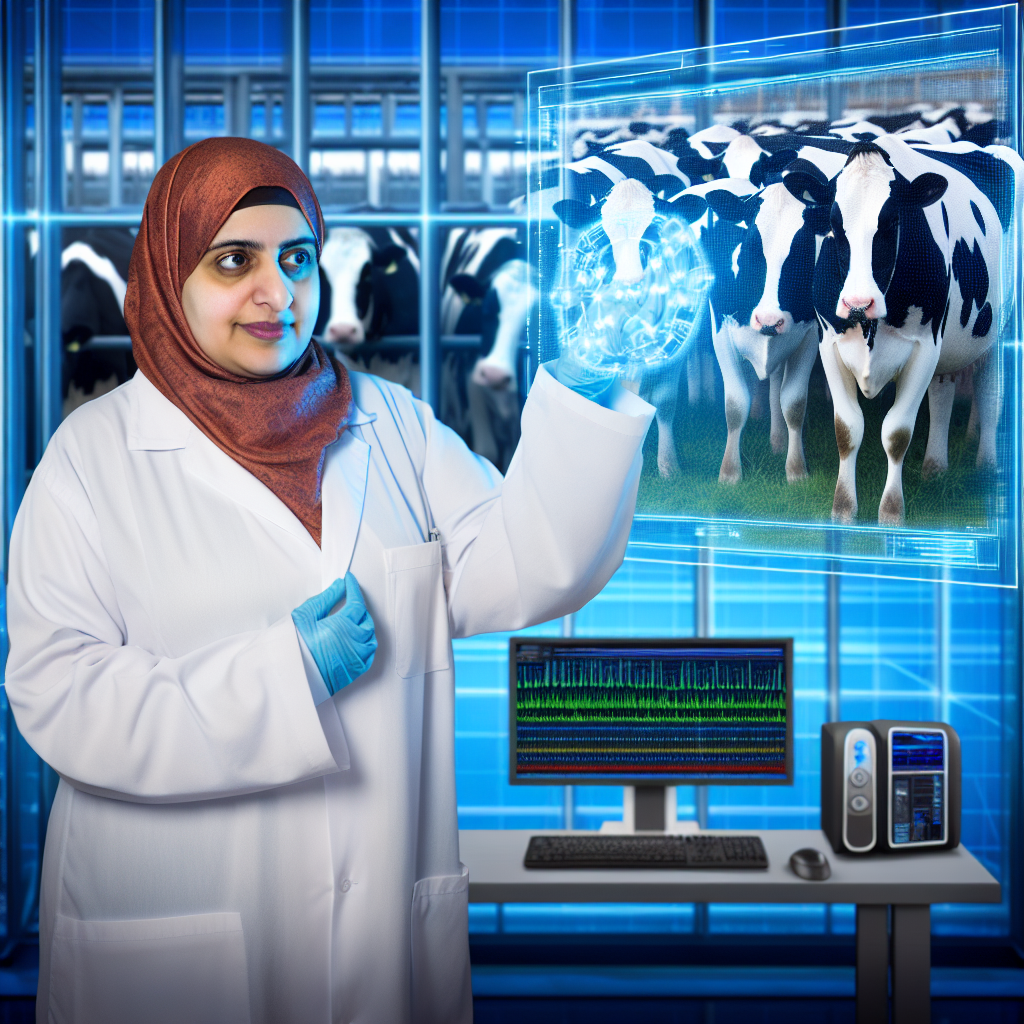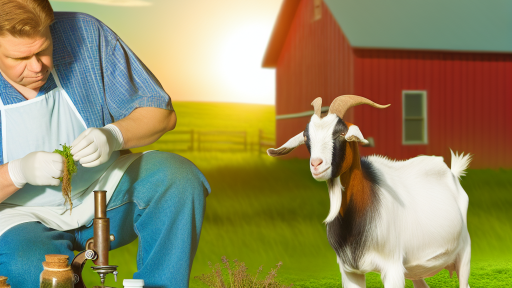Introduction to Genomic Selection in Livestock
Genomic selection revolutionizes livestock breeding practices.
It utilizes genomic information to improve selection accuracy.
This method accelerates genetic progress in animal populations.
Traditionally, breeding relied heavily on phenotypic traits.
However, phenotypic selection does not capture all genetic variations.
Genomic data enhances breeders’ ability to select superior animals.
Moreover, this approach shortens generation intervals significantly.
Therefore, it leads to quicker implementation of desired traits.
The process begins with collecting DNA samples from livestock.
Next, genomic markers are identified through advanced technologies.
This information allows for predictions of breeding values.
Transitioning to this method requires investment in technology and training.
Nonetheless, many livestock producers have successfully adopted it.
This shift has proven beneficial for several breeds around the globe.
In particular, dairy and beef cattle have seen substantial improvements.
Transform Your Agribusiness
Unlock your farm's potential with expert advice tailored to your needs. Get actionable steps that drive real results.
Get StartedSuccess stories from companies like Genus plc highlight its effectiveness.
Furthermore, genomic selection contributes to sustainability in livestock production.
It allows for the breeding of animals that are resilient and productive.
Consequently, this method supports the growing demand for meat and dairy products.
Genomic selection is a transformative tool for livestock breeders.
Historical Background and Development of Genomic Selection
Origins of Genomic Selection
Genomic selection emerged in the early 2000s as a groundbreaking breeding method.
It evolved from advancements in genomics and molecular biology.
Scientists recognized the potential of DNA markers to predict traits in animals.
This development aimed to improve efficiency in livestock breeding.
Key Innovations and Technological Advances
The advent of high-throughput genotyping revolutionized genetic evaluations.
These technologies enabled rapid analysis of thousands of genetic markers.
Researchers, such as Dr. Stephen Moore, pioneered the implementation of genomics in livestock.
As a result, breeders gained access to more accurate predictions of animal performance.
Impact on Livestock Breeding Programs
Genomic selection transformed traditional breeding programs significantly.
Breeders can now make informed decisions based on genetic potential.
This approach reduces the generation interval for selecting superior animals.
Consequently, it enhances genetic progress within populations over time.
Challenges and Ethical Considerations
Despite its advantages, genomic selection presents challenges.
Questions about genetic diversity and inbreeding arise with intensive selection.
Ethical considerations regarding animal welfare also surface in discussions.
Breeders must balance efficiency with the health and well-being of livestock.
Future Directions of Genomic Selection
Future developments may incorporate advanced machine learning algorithms.
Such innovations will further refine predictive accuracy in breeding programs.
Additionally, researchers will explore the integration of environmental factors.
Showcase Your Farming Business
Publish your professional farming services profile on our blog for a one-time fee of $200 and reach a dedicated audience of farmers and agribusiness owners.
Publish Your ProfileThis evolution aims to develop more sustainable livestock production practices.
Key Benefits of Genomic Selection in Livestock Breeding
Improved Breeding Efficiency
Genomic selection significantly enhances breeding efficiency.
It reduces the generation interval for livestock.
This improvement accelerates the breeding cycles.
Consequently, farmers can produce better livestock faster.
Increased Genetic Gain
The use of genomic selection increases genetic gain.
It allows breeders to select superior animals more accurately.
With better genetic insights, breeders make informed decisions.
This leads to healthier and more productive livestock.
Cost-Effectiveness
Genomic selection can be more cost-effective than traditional methods.
It minimizes the need for extensive progeny testing.
Breeders can identify the best candidates sooner.
This reduces the costs associated with raising less desirable animals.
Enhanced Disease Resistance
One major benefit is enhanced disease resistance in livestock.
Genomic data can reveal genetic traits linked to immunity.
Farmers can select animals more resistant to diseases.
This results in lower veterinary costs and healthier herds.
Improved Traits for Production
Genomic selection allows targeted improvements in production traits.
Breeders can focus on traits such as growth rate and feed efficiency.
This leads to livestock that perform better in diverse environments.
Ultimately, this enhances overall farm productivity.
Support for Sustainable Practices
Implementing genomic selection supports sustainable farming practices.
It helps optimize resource use and animal welfare.
Farmers can produce more with less environmental impact.
This approach aligns with modern sustainability goals.
Delve into the Subject: Breeding Techniques for Exotic Livestock
Technological Advances Supporting Genomic Selection
Next-Generation Sequencing
Next-generation sequencing (NGS) revolutionizes genomic studies.
It allows researchers to sequence genomes quickly and affordably.
With NGS, scientists identify genetic markers linked to desirable traits.
This technology enhances the efficiency of genomic selection processes.
Genomic Data Analysis Tools
Powerful software tools analyze vast amounts of genomic data.
Programs like PLINK and GCTA provide valuable insights into genetic variance.
These tools streamline the interpretation of complex genomic information.
As a result, breeders can make informed decisions based on data analytics.
High-Throughput Phenotyping
High-throughput phenotyping accelerates trait evaluation in livestock.
This technology uses automated systems to measure physical traits.
Phenotypic data collected aids in associating traits with genomic information.
Consequently, breeders can select animals with superior qualities more efficiently.
Bioinformatics and Computational Biology
Bioinformatics facilitates the integration of genomic and phenotypic data.
Computational biology models predict animal performance based on genetic data.
Showcase Your Farming Business
Publish your professional farming services profile on our blog for a one-time fee of $200 and reach a dedicated audience of farmers and agribusiness owners.
Publish Your ProfileThese predictions optimize breeding strategies and genetic improvement.
Furthermore, they help manage genetic diversity within livestock populations.
Collaboration and Knowledge Sharing
Collaboration among researchers enhances genomic selection efforts.
Shared databases and resources promote faster advancements in genetic research.
International consortia focus on livestock genomics, generating comprehensive data.
These partnerships strengthen the entire genomic selection framework.
Explore Further: Goat Housing Design for Better Livestock Health
Implementation Strategies for Genomic Selection Programs
Defining Objectives
First, clearly define the goals of the genomic selection program.
Establish measurable targets to evaluate success.
In addition, consider the specific traits to enhance in the livestock population.
Assembling a Multidisciplinary Team
Gather experts from various fields to contribute to the program.
Include geneticists, animal breeders, and data analysts.
Furthermore, engage veterinarians to assess animal health and welfare.
Choosing Appropriate Technologies
Select advanced genomic technologies to support the program.
Next-generation sequencing provides comprehensive genetic data.
Additionally, microarray technology allows for assessing specific genomic regions.
Collecting and Analyzing Data
Implement robust data collection methods to gather extensive genetic information.
Use high-quality phenotypic data alongside genomic data for analysis.
Utilize statistical software to analyze the data and identify patterns.
Implementing an Effective Breeding Strategy
Integrate genomic selection into the existing breeding program.
Choose breeding candidates based on their genomic predictions.
Moreover, ensure that the strategy remains flexible and adaptable.
Monitoring Progress
Regularly assess the program’s outcomes against set objectives.
Utilize performance metrics to track improvements in the livestock population.
In addition, gather feedback from stakeholders to identify areas for enhancement.
Ensuring Ethical Considerations
Address ethical considerations related to genomic selection.
Maintain transparency with stakeholders about the program’s aims and methods.
Moreover, prioritize animal welfare throughout the selection process.
Education and Training
Provide education and training for all team members.
This initiative ensures that everyone understands genomic selection principles.
Furthermore, continuous learning keeps the team updated on new advancements.
Find Out More: Nutrition and Feed Innovations in Fish Farming

Challenges and Limitations of Genomic Selection in Livestock
Cost of Implementation
Genomic selection can be expensive for livestock producers.
The initial setup involves high costs for technology and resources.
Moreover, continuous expenses arise from data collection and analysis.
Data Quality and Management
Accurate genomic selection relies heavily on high-quality data.
Inadequate data can lead to incorrect predictions and poor breeding decisions.
Data management systems must be robust to handle large genomic datasets.
Complexity of Genetic Traits
Many important traits in livestock are polygenic.
This complexity makes predicting outcomes challenging.
Showcase Your Farming Business
Publish your professional farming services profile on our blog for a one-time fee of $200 and reach a dedicated audience of farmers and agribusiness owners.
Publish Your ProfileInteractions between genes can further complicate selection processes.
Need for Specialized Knowledge
Implementing genomic selection requires specialized knowledge in genetics.
Producers often need training or expert consultation.
Lack of expertise can hinder effective use of genomic selection tools.
Resistance from Traditional Breeders
Some traditional breeders resist adopting genomic selection.
They may prefer conventional breeding methods.
Building trust in new technologies is imperative for wider acceptance.
Regulatory and Ethical Concerns
Genomic selection raises ethical questions in livestock breeding.
Concerns about animal welfare and biodiversity are prevalent.
Regulatory frameworks must evolve to address these challenges.
Find Out More: Training Your Team for Effective Livestock Handling
Case Studies: Successful Examples of Genomic Selection
Dairy Cattle Improvement
The Holstein breed in the United States illustrates successful genomic selection.
Through genomic testing, breeders identified desirable traits in cows.
As a result, milk production increased significantly within a few generations.
For example, Green Valley Farms utilized genomic data to enhance milk yield.
This approach also improved overall herd health, reducing veterinary costs.
Pork Quality Enhancement
In the pork industry, Boar Genetics adopted genomic selection to improve meat quality.
They focused on traits such as marbling and tenderness for better consumer appeal.
The company recorded higher profits due to improved product quality.
Additionally, their breeding program demonstrated faster growth rates in piglets.
This advancement led to increased efficiency and reduced resource usage.
Beef Cattle Genetics
Beef Focus Inc. implemented genomic selection to enhance growth efficiency in cattle.
Their program aimed to select for traits that lead to better feed conversion ratios.
Consequently, this strategy resulted in lower feed costs for farmers.
Moreover, the selected bulls produced calves with superior carcass quality.
The beef industry saw significant economic benefits from these advancements.
Sheep Breeding Innovations
In sheep breeding, Fine Wool Sheep Co. applied genomic methods to improve fleece quality.
This initiative targeted traits such as fiber diameter and length.
By utilizing genomic data, they achieved more consistent and higher-quality wool.
Their successful program encouraged other breeders to adopt similar methods.
As a result, the overall quality of sheep products improved across the market.
Future of Genomic Selection
The application of genomic selection in livestock continues to expand globally.
Innovative research and technology will further enhance breeding programs.
Farmers will benefit from optimized traits that meet market demands more effectively.
Genomic selection represents a promising direction for sustainable livestock production.
Future Trends and Innovations in Genomic Selection for Livestock
Advancements in Genomic Technologies
New genomic technologies are emerging rapidly in livestock breeding.
These advancements enhance the precision of genetic evaluations.
Whole-genome sequencing is becoming more accessible and cost-effective.
As a result, breeders can identify beneficial traits more accurately.
Integration of Artificial Intelligence
Artificial intelligence is revolutionizing genomic selection.
Showcase Your Farming Business
Publish your professional farming services profile on our blog for a one-time fee of $200 and reach a dedicated audience of farmers and agribusiness owners.
Publish Your ProfileAI algorithms can analyze vast data sets quickly and efficiently.
This technology improves the prediction of genetic performance.
Consequently, it aids in making informed breeding decisions.
Utilization of Genomic Data in Breeding Programs
Genomic data is increasingly integrated into breeding programs.
This integration allows for the identification of elite breeding animals.
It also helps in assessing the genetic diversity of populations.
Furthermore, breeders can tailor selection strategies to specific goals.
Collaboration Among Stakeholders
Collaboration among stakeholders is essential for success.
Breeders, researchers, and policymakers must work together.
This teamwork fosters knowledge sharing and resource optimization.
Joint initiatives can accelerate the development of genomic tools.
Ethical Considerations and Regulatory Landscapes
Ethical considerations are becoming increasingly important.
Society demands transparency in genetic modifications and breeding practices.
Regulatory frameworks need to adapt to advancements in genetics.
Effective strategies will ensure animal welfare and ethical compliance.
Future Perspectives on Livestock Genomics
The future of livestock genomics holds great potential.
Emerging technologies will likely enhance genetic selection outcomes.
As a result, livestock farming may become more efficient and sustainable.
Innovation will help meet global food demands while protecting resources.
Additional Resources
How mites influence cage-free egg production in the United States …
Research Changes in genetic trends in US dairy cattle since the …




